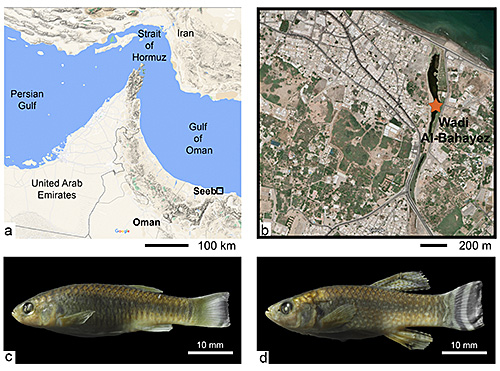Sex dimorphism and sexually selected traits in Aphanios stoliczkanus
This study is the outcome of the Research Project of our MGAP student Andrea Herbert Mainero in collaboration with researchers from Oman and New Zealand and was published in Acta Zoologica.
21.08.2022
Herbert Mainero A, Al-Jufaili SM , Jawad L, Reichenbacher B (2022) : Sex dimorphism and evidence of sexually selected traits: A case study on the killifish Aphaniops stoliczkanus (Day, 1872). Acta Zoologica, https://doi.org/10.1111/azo.12436.
The full text of the paper is available here: https://onlinelibrary.wiley.com/doi/full/10.1111/azo.12436
Among freshwater fishes, all members of the Aphaniidae (killifishes, Cyprinodontiformes) are known for their pronounced sex dimorphism, and it has been proposed that sexual selection has played a role in their diversification. In this study, the killifish Aphaniops stoliczkanus (Day, 1872) was used to analyse morphological variability within and between sexes and within the total sample using statistical analyses of body morphometry, meristic traits and otolith data. The outcome revealed that sex dimorphism is significant in many body morphometric variables, but (almost) absent in other traits and that males have longer and more anteriorly positioned anal and dorsal fins than females. Furthermore, sex dimorphism does not alter the overall variance of the population unless the character concerned is highly divergent. The new data indicate that anal- and dorsal-fin lengths in males of A. stoliczkanus are sexually selected traits, which reinforces the idea that sexual selection plays a role in the diversification of aphaniid species. The results are also relevant to work on fossils, in which morphological variability is often difficult to interpret.


